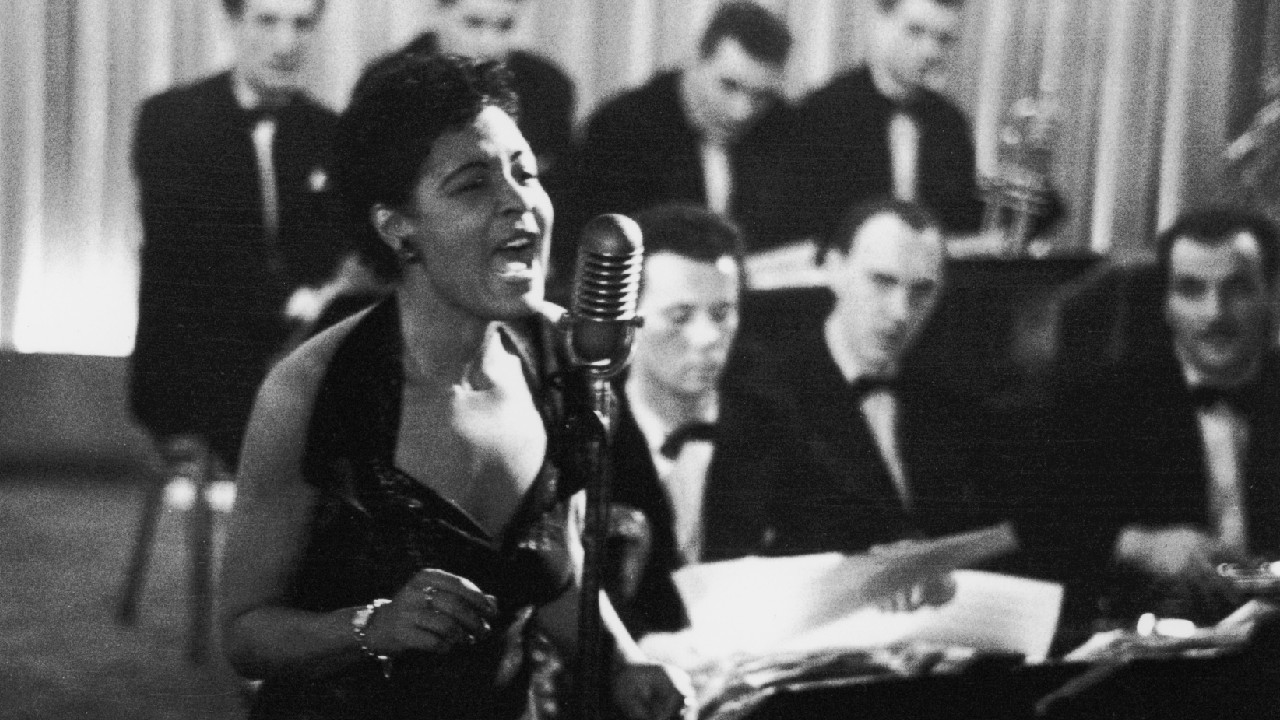News feed

Written by Channing Hargrove
There is a scene in Lee Daniels’ The United States vs. Billie Holiday when the legendary jazz musician (portrayed by Golden Globe-winning actress Andra Day in the title role) is denied access to an elevator in a fancy hotel with her (white) friend Tallulah Bankhead.
“You’ll have to take the service elevator,” the Black attendant tells Holiday. Adjusting her fur shawl — paired with large diamond earrings, a matching necklace, and a floral dress made custom by costume designer Paolo Nieddu — Holiday walked away. But it’s Holiday’s reaction — pulling herself together within seconds by recentering her fur and walking out of the hotel lobby, head held high — is an example of how she used her clothing as armour.
“I could see around me many Black American people whose excellence was rewarded with very harsh treatment by the government, or the system in Hollywood, or the theatre system or whatever,” Pulitzer Prize-winning playwright and the film’s screenwriter Suzan-Lori Parks told the Los Angeles Times when the biopic was released. “I did the math and realised it must have had something to do with the status quo, you know?”
The powers that be must have had some hand in Billie Holiday’s downfall. The biopic reframes Holiday’s legacy and confronts the United States government’s conspiracies to stop her from singing “Strange Fruit,” a haunting song focusing on the epidemic of lynching in the American South during the early 20th century. Former Los Angeles Times jazz critic Leonard Feather described it as “the first significant protest song in words and music, the first unmuted cry against racism.”
Holiday wasn’t only protesting with her voice, but with her appearance also. Day told Entertainment Weekly she considered Holiday’s looks an act of defiance, particularly her diamond jewellery.
“It’s important when we talk about her fashion that we remember how radical it was for a Black woman to be in her position during that era,” Day told Vogue earlier this year. “Mainstream society had a problem with seeing Black women in the context of success. In those days, uppity was still part of the vernacular. People said, ‘How dare she wear diamonds, how dare she wear fur,’ but she dressed as a woman of her stature should have. She represented herself exactly as she wanted to and that in itself was revolutionary.”
Holiday’s fashion was very much part of her activism but it was joyful, too. “Billie was a global superstar during her lifetime and set trends,” Day told Vogue. “In the film, we’re in [clothes] that are accurate for the period, and it feels modern because she was so ahead of her time. In the 40s, she was wearing the cowl-neck sweaters that became popular in the 1960s, designers were making clothes especially for her, and magazines around the world would document each outfit she wore.”

The United States vs. Billie Holiday costume designer Paolo Nieddu tells GRAZIA it was important for Holiday’s portrayal in the film to be glamorous. “Lee Daniels said that he wanted her to look like Black excellence,” Nieddu said. Holiday traveled the world, she played Carnegie Hall, but she also was a New Yorker and a woman living in Harlem during the golden age of jazz. “All artists express themselves through fashion,” he confirmed. “I thought it was really important for me to make sure she had that star quality at all times.”
In his research, Nieddu (who has also brought the characters to life through clothing on the Sex and the City movie, Confessions of a Shopaholic, and Fox’s Empire) found that Holiday was always ‘done,’ and was someone who enjoyed fashion a lot. He worked with Prada on nine costumes to ensure the film’s visuals were as impactful as the actual story. Prada is timeless, Nieddu told GRAZIA of the collaboration, because of its ”modern yet vintage feeling that’s still very feminine with its the-mid century glamour.”
Holiday’s story is tragic. She died at 44 after being repeatedly targeted by the government but as Nieddu put it, Holiday’s use of fashion as resistance was a shield against those demonising the singer for her struggles with alcoholism and heroin.
“She never let them see her sweat,” he said. “She lived her life. I think she took those low moments as a way to shine brighter. Billie had something to say and she said it unapologetically. She looked as powerful as her words were and it showed in how she presented herself with her clothing.” Nieddu hopes viewers not only remember Holiday for wearing a flower in her hair and long gloves but as an icon in the same regard like Elvis, David Bowie, or Tina Turner: music icons with great style.
“To me she is in that league and she was a pioneer,” Nieddu said. “I definitely would want people to look at her and not think of tragedy but her clothing, style and individuality,” he continued. “She was so avant-garde. I want people to say, ‘wow Billie Holiday is a fashion icon.’ Now that people have seen this movie, it creates a new sort of vision of Billie Holiday in their head. I hope I did her proud,” said Nieddu.
“The truth is that the government took down this woman,” Daniels said of the iconic singer. “She was a civil rights leader, an icon in fashion, a gay woman, and a brilliant singer. Like most African Americans in that era, she grew up impoverished and had a complicated past. She did what she could do with her upbringing, but she was a hero.”







